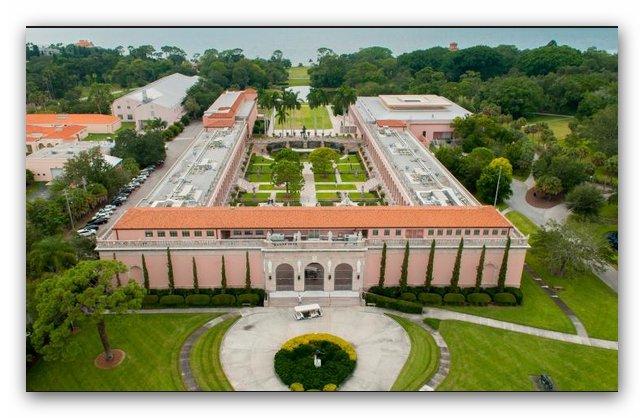Aug 15 2021 - Jan 16 2022
John and Mable Ringling Museum of Art
Sarasota, FL
Contemporary Ceramics and Glass
Since the first piece of clay was baked in a fire over 12,000 years ago, pottery has become one of the pinnacles of Japan’s artistic achievements. Over its long history, Japanese pottery has drawn stylistic and technical know-how from its neighbors, especially China and Korea. The artists represented here, working between the mid-20th century and the present, demonstrate different approaches to the legacy of the past and the ever-expanding possibilities of this medium.
Glass has a more recent history in Japan. From the Yayoi period (300 B.C.E.–300 C.E.), glass was imported and produced in limited quantities for ritual and luxury use. With the introduction of European techniques, domestic production escalated in the 18th century to furnish a broad market with decorative, utilitarian, and scientific articles. Manufacturing processes were modernized in the late 19th century, supporting the diversification of the industry. Stimulated by growing international exchange and recognition, studio glass has been gaining momentum as a mode of artistic expression in Japan since the 1970s.
Featuring artworks by Fujikasa Satoko (b. 1980), Miyashita Zenji (1939–2012), Niisato Akio (b. 1977), and Ikuta Niyoko (1953), this exhibition testifies to the technical finesse and imaginative spirit that make glass art and ceramics robust and dynamic fields. The Ringling is grateful to lenders Carol and Jeffrey Horvitz and the donors that have built The Ringling’s collection in these media.
Abstract Impressions
Following the Second World War, Japanese artists were invigorated by international artistic exchange and exposure to new audiences. These circumstances facilitated the expansion of modes of abstraction, whereby color, shapes, textures, and expressive marks are used to create images that are more or less independent of visual reality, into the mainstream of Japanese printmaking. Artists pursuing abstraction both responded to, and sometimes challenged, Western modernist art and the legacy of the past.
The exhibition includes pioneering artists such as Iwami Reika (1927–2020) who found new possibilities in Geometric Abstraction, while others, like her contemporary Shinoda Tōkō (1913–2021) were stimulated by Abstract Expressionism. These movements were themselves the products of decades of cross-cultural dialog; for example, the emphasis on calligraphic brushstrokes and spontaneous gesture in the latter was informed, although often unacknowledged, by the work of avant-garde calligraphers and popular discourse on Zen Buddhism.
Japanese artists’ approaches to abstraction also emerged from explorations of their media, whether it be woodblock printing — a process perfected in 18th century Japan — or newer technologies, such as lithography. The materials and methods of printmaking are ideally suited to producing masses of flat color and texture, such as the woodgrain patterns of Hoshi Jōichi’s (1913–1979) abstract compositions. Decorative exuberance, such as the metallic finishes, rich pigments, and textured surfaces in Tamekane Yoshikatsu’s (b. 1959) prints, pay tribute to sophisticated precedents to modern abstraction, such as Japan’s Rinpa school (flourished 17–19th c.).
Drawing from The Ringling’s collection and loans from Christine and Paul Meehan and Daphne Rosenzweig, Abstract Impressions introduces some of Japan’s most innovative printmakers active between the between the 1950s and the present.
Credit: Exhibition overview from museum website
Exhibition Venues & Dates
Aug 15 2021 - Jan 16 2022
John and Mable Ringling Museum of Art
Sarasota, FL
